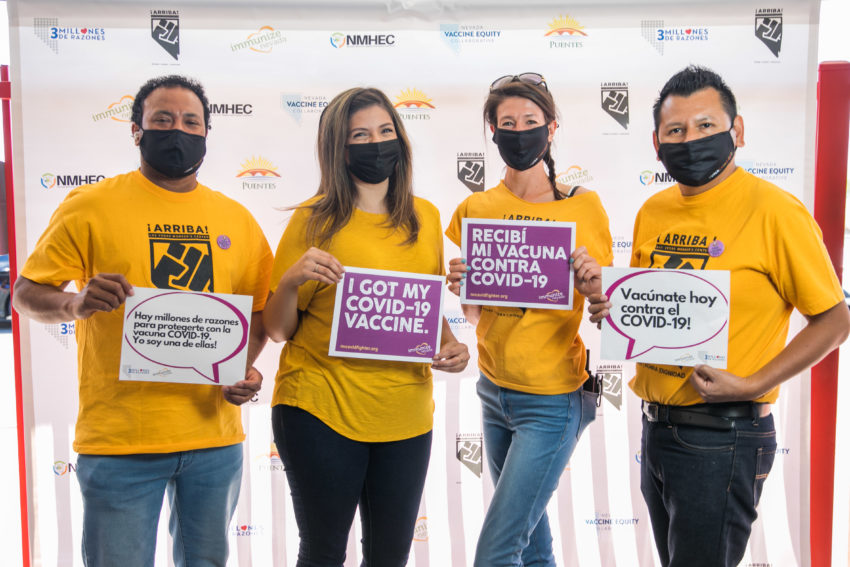
Share On Social!
Everyone deserves an equal chance to get a COVID-19 vaccine.
But some communities, like Latinos, don’t have as much access or information about the vaccine or are hesitant to get vaccinated.
The Nevada Vaccine Equity Collaborative (NVEC) is working to change that.
Co-led by Immunize Nevada and the Nevada Minority Health and Equity Coalition, the NVEC is working to promote equitable distribution of the COVID-19 vaccine in Nevada, particularly among vulnerable communities.
“I think as we were kind of creating a response, we knew that we weren’t just responding to the actual physical effects of COVID. But just misinformation as well, looking at what, you know, why people weren’t getting vaccinated and kind of looking at some of those off the wall reasons and thinking, how are we going to respond and reason with some of these arguments that are being made?” said David Pérez, Public Affairs and Community Engagement Manager for Immunize Nevada.
Although reaching vulnerable populations and tackling vaccine hesitancy is difficult, the NVEC has had success with vaccine clinics and expanding communication.
What is the NVEC?
The NVEC is a collaborative that comprises state legislators, community members from diverse backgrounds, healthcare providers, faith-based leaders, and public and private representatives.
The main groups behind the collaborative have been part of the state’s COVID-19 response since the beginning of the outbreak. But as vaccine distribution began, Nevada Gov. Steve Sisolak wanted to focus on equity.
“There was a briefing released by the governor mentioning how the current data that he was looking at was showing that there were inequities, who was accessing the vaccine and who wasn’t able to. And so being able to kind of collaborate and create a response to that situation is going great,” Pérez said.
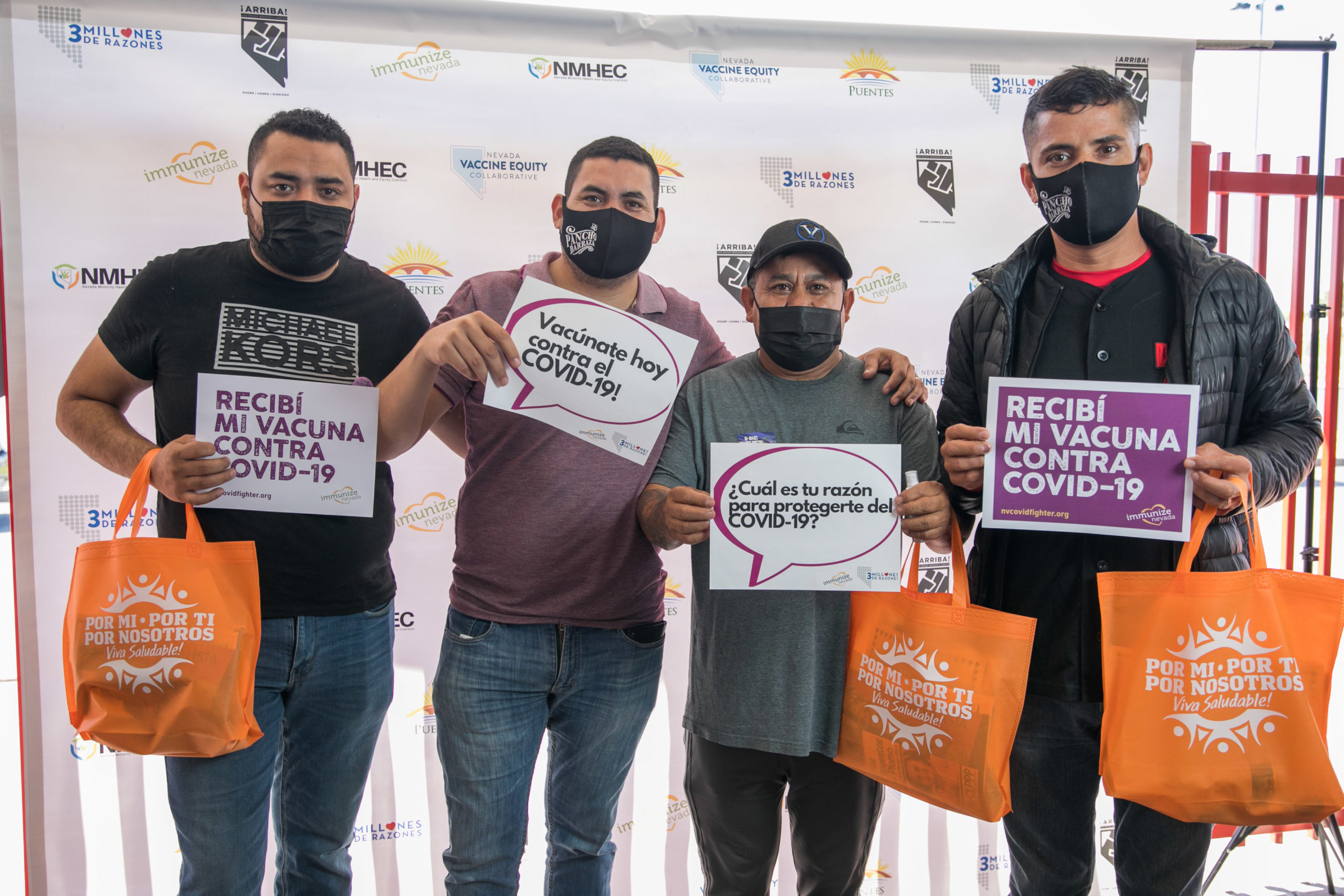
The NVEC is made of the communications and outreach workgroup, as well as the equitable vaccine distribution workgroup.
“The communication workgroup helps identify what that message should include and how that message should be delivered. It’s very broad, constantly pivoting, about identifying community leaders that are trusted to help us disseminate the information, engaging partners to help us create that messaging,” said Dr. Erika Marquez, assistant professor at UNLV School of Public Health and member of the Nevada Minority Health and Equity Coalition.
During the COVID-19 response, their communication efforts focused both on education about the vaccine and addressing hesitancy, as well as communicating information about how to receive a vaccine.
“It’s been about that vaccine access communication, that we appropriately get information out to the community when pods go up, and try to be timely in that and being diverse in what that communication looks like – in language, in making sure it’s not just social media based, because we know there’s technology issues in our communities,” Marquez said.
The equitable vaccine distribution workgroup focuses on creating pop-up distribution sites.
“These pop-up clinics are these point of distribution sites, where we actually collect input from the collaborative and the community where they think that we should include and set up these sites. And the two work groups really layer perfectly in the sense that just setting up a clinic doesn’t necessarily mean that people will come. It’s being able to include the input from the community and saying, ‘Okay, what do the vaccinators need to be asking? What’s the preferred language, what kind of materials need to be distributed, what kind of legwork has to be done beforehand?’” Pérez said.
An important aspect of the NVEC is collaborating with community partners that are trusted by vulnerable populations.
“It takes a lot of legwork. It takes a lot of partnering with those community organizations where that trust already exists. Just making sure that all of that legwork is done, to be able to have a successful event and not just go into a community into a local school and set up a clinic that itself may not be necessarily successful. It takes a lot of involvement, a lot of key community partners,” Pérez said.
Together with community partners, the NVEC has been able to organize successful vaccine clinics.
“The partnership of community leaders, trusted leaders can mobilize an entire community to get vaccinated. I believe we got almost 500 people vaccinated in one day and I think they talked to like 2,000-2,500 people,” Marquez said.
Who is the NVEC Trying to Reach?
The NVEC is centered on equitable distribution for vulnerable populations in Nevada, so an important aspect is understanding who they’re trying to reach.
Pérez helps with the statewide “3 Million Reasons” Campaign, which highlights the diversity of the state.
“There’s roughly 3 million people who live in Nevada, each of us has a reason to get vaccinated, whether it be for our community, one another, or more kind of personal reasons. But we’re just such a broad range of individuals that live here. We have a whole bunch of rural communities and then kind of the larger cities, and we have a huge population just because of our gaming industry,” Pérez said.
The main populations that NVEC hopes to reach are the Latino, Black, and Indigenous communities.
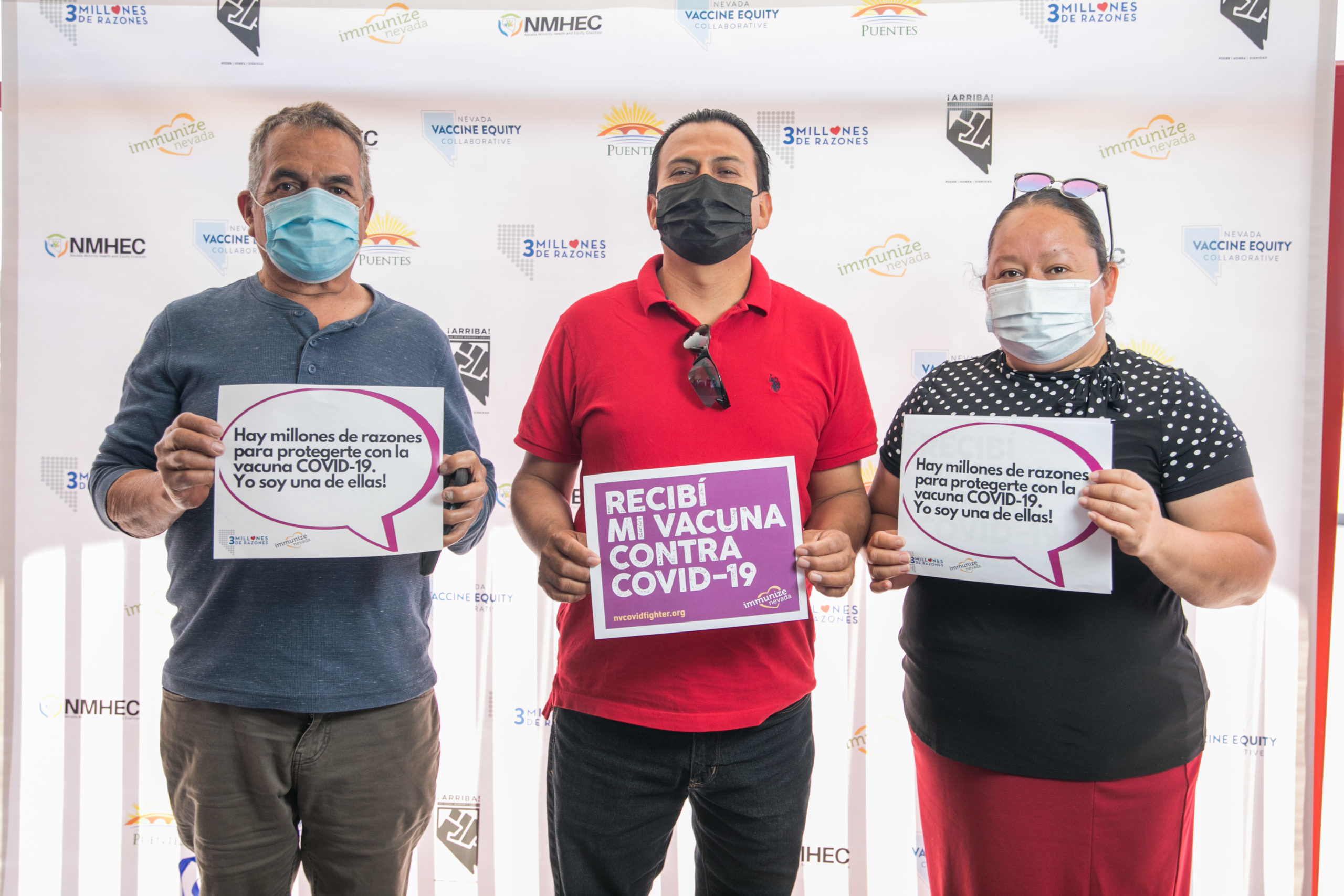
“We conducted 27 focus groups with over 200 participants over the last two to three months of last year to really understand and get a heads up on what we need to do to respond to the vaccine hesitancy or to build confidence. And those were the three populations that really expressed the concerns about taking the vaccine,” Marquez said.
Understanding the diversity in the community is important for tailoring their messages.
“When we moved forward after the vaccines were released, it was really thinking about what are the culturally responsive ways we can reach to these communities. And what we have done under the One Community campaign which we’ve carried over into this collaborative, is really making sure that there’s community voice at the table, and that they help guide the process,” Marquez said.
How is the NVEC Addressing Vaccine Hesitancy?
Through their various campaigns, the NVEC has had to examine what causes different communities to be hesitant about the vaccine.
For many, it has to do with a fear of government.
“I feel like this messaging of fear of government kind of lives within every population we work with, just from a different angle. So when working with an immigrant population, making sure there aren’t immigrant detention officials that may be there. And then we’ve been seeing when we’re looking at more rural clinics, there’s more of a conservative anti-government aspect. So there seems to be this fear of government messaging that we have to tackle from a myriad of different angles, just because there’s a different reason that different populations have that sentiment,” Pérez said.
Marquez says that having community participation is the key to connecting with specific populations.
“I think it changes our perspective about how we deploy public health interventions and I think it helps us change the conversation a little bit so that it’s not just coming from the government. I think we have a technical expertise being public health professionals, but they have a community expertise that we don’t have. They’re helping us craft how that message should be delivered, how things need to be deployed on the on the ground,” Marquez said.
Facing the Pushback and Other Challenges
While the collaborative has been successful in reaching communities and setting up many vaccine clinics, they also seen some pushback and met other challenges.
One comes from misunderstanding what equity truly is.
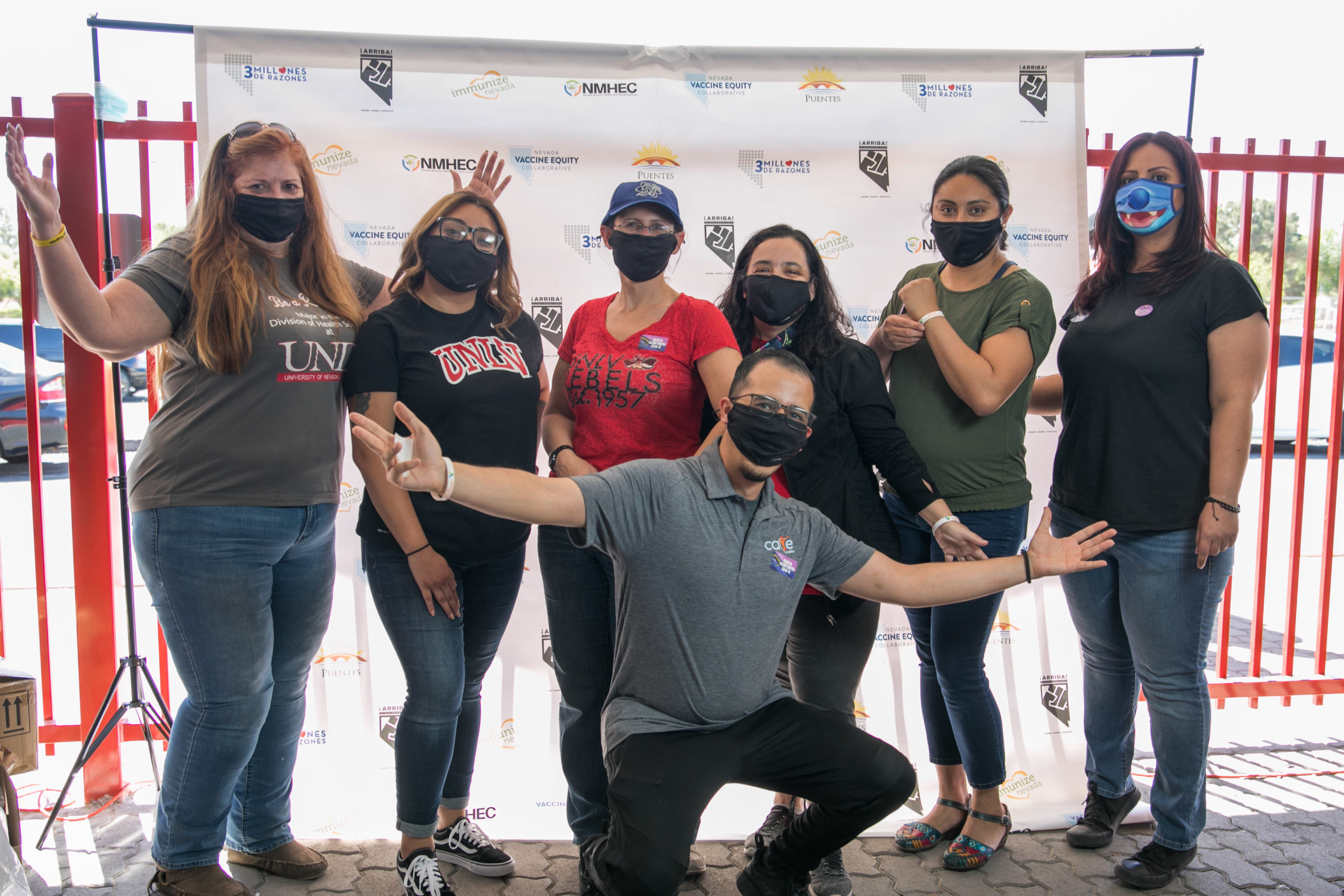
“There seems to be this miscommunication in terms of what equity means. Nevada previously had a tiered lane system, like many other states did, in terms of who could qualify for a vaccine depending on age and occupancy. And so some of the conversation was usually just, ‘Well, why can’t we just open it to everyone?’ without really thinking of who has access to technology, who can create an appointment, who’s able to read and write and drive and get to these clinics. So it has really presented us with an opportunity to be able to explain these different scenarios and how we can respond to them,” Pérez said.
But even within the communities they are trying to help, Pérez and Marquez have noticed suspicion or hesitancy about the targeted messaging.
“I noticed sometimes there’s a little bit of pushback, like ‘Public health has never cared about us before. And now you need us to get vaccinated.’ The one very thin silver lining to this pandemic is that it gives us an opportunity to reintroduce ourselves and our efforts to our community, and be able to build that trust and be able to do so in a way that promotes vaccine uptake,” Pérez said.
The Future for the NVEC
As COVID-19 vaccination efforts continue, the NVEC will be busy.
But eventually, the group may be restructured to continue their efforts in a new way.
“The title may change, but I think the efforts will still be there. Regardless of what title we’re under, I think it’s something we’re still going to be working on,” Pérez said.
Building partnerships with the community will continue to be vital, no matter what projects they work on in the future.
“There will definitely be some version of this collaborative, continuing to build partnerships to address the multitude of issues in the recovery process. And those social determinants of health are going to be critical that we address as a community,” Marquez said. “I always tell my students, there’s nothing on my CV that is done alone, it’s done in partnership with a million people.”
You can build vaccine confidence in your area, too.
Help our Salud America! team share the stories of real Latinos who overcame misinformation, got the vaccine, reconnected with family, and are helping end the pandemic!
By The Numbers
1
out of 10
Pedestrians survive when hit by a car at 40 MPH
This success story was produced by Salud America! with support from the Robert Wood Johnson Foundation.
The stories are intended for educational and informative purposes. References to specific policymakers, individuals, schools, policies, or companies have been included solely to advance these purposes and do not constitute an endorsement, sponsorship, or recommendation. Stories are based on and told by real community members and are the opinions and views of the individuals whose stories are told. Organization and activities described were not supported by Salud America! or the Robert Wood Johnson Foundation and do not necessarily represent the views of Salud America! or the Robert Wood Johnson Foundation.

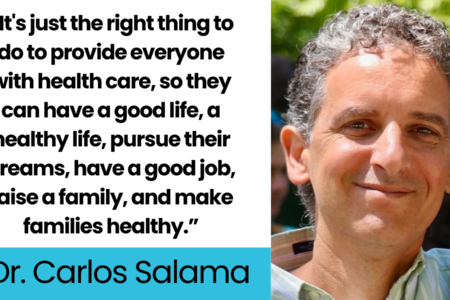

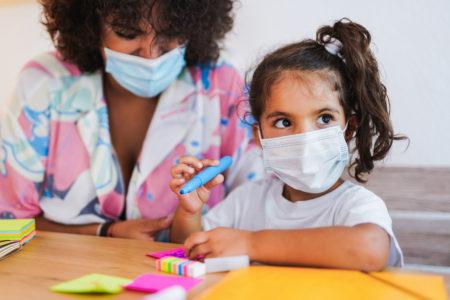
[…] The pandemic is another chapter in the bitter story of American racism and inequality. Black and Latinx people are being infected and are dying at much higher rates than white Americans. Many people of […]
[…] coronavirus has killed over 61,000 Latinos in America according to the CDC, accounting for over 18.2% of the total COVID deaths in the […]
[…] Whereas Hispanics make up 11% of D.C.’s inhabitants, they signify 19% of the COVID cases, and 14% of the deaths. Equally, 46% of D.C.’s residents are Black, they usually make up an alarming 75% […]
[…] and historical mistreatment. According to the U.S. Centers for Disease Control and Prevention, Latino and Black American communities are three times more likely to become infected with […]
[…] Covid pandemic has hit the Latino community particularly hard, and data from the nonprofit health equity advocacy group Salud America! shows Latinos lead in the 0-24 age […]
[…] the pandemic, Latinos took major blows, both in terms of COVID-19 cases and also from the economic recession under former President Donald Trump. Nearly half (49%) of […]
[…] the positive trend, the harm may have already been done. The pandemic has disproportionately impacted Latino communities. Reuters reported that election-related or political disinformation that […]
[…] pesar de la tendencia positiva, es posible que el daño ya esté hecho. La pandemia ha impactado desproporcionadamente Comunidades latinas. Reuters informó que la desinformación política o relacionada con las […]
[…] residentes blancos muestran una tasa mucho más baja con 10 muertes por cada 100,000 habitantes(8 9) . Los afroestadounidenses por su parte, denuncian subsistemas de salud que les segregan […]
[…] https://salud-america.org/coronavirus-case-rates-and-death-rates-for-latinos-in-the-united-states/ […]
[…] https://salud-america.org/coronavirus-case-rates-and-death-rates-for-latinos-in-the-united-states/ […]
[…] communities have the second-highest number of COVID-19 cases in the U.S. They’re also more likely to become hospitalized and die from the disease than other […]
[…] total, around 160,000 Latinos were killed by COVID-19. This accounts for 16% of the 1 million deaths in the country. The […]